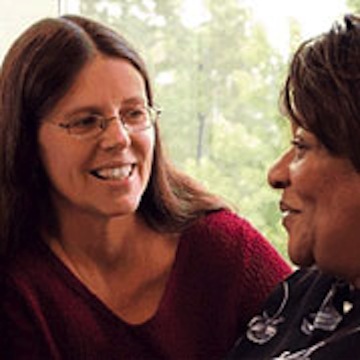We probably all remember elementary school science worksheets, those ink-marked copied pages with large Comic Sans text that asked us the most basic questions: What do you see? What do you smell? What do you hear? These are simple enough questions, with simple answers to simple experiments. As the science gets more complex, so do the questions, and the fact that a researcher’s daily bread-and-butter, the core component of our work, is merely observation often gets lost among that complexity. The importance of it, however, cannot be forgotten.
Dr. Vicky Seewaldt, formerly of Duke University and now a clinician and the Population Sciences department chair at City of Hope in California, and her work investigating the mechanisms of malignant progression in high-risk breast cancer patients highlight the crucial role that simple observation can play, and how it can lead to more tangible advances in how we conceptualize, research, and treat disease. When she made the move from University of Washington to Durham, North Carolina, she found herself treating a new patient population, the majority of whom were women of color. When some of her high-risk patients came to her and described their cancers as seemingly ‘appearing from nowhere’—a concept that, at the time, was at odds with her previous experience with breast cancer diagnosis—she did not dismiss them. Instead, she listened to their very personal experience with their very personalized disease. She listened, she observed, and then she began to wonder and plan.
For more than a decade, Dr. Seewaldt worked for and with her patients to delve more deeply into understanding why certain populations display such aggressive disease progression. Her main focus was on identifying biomarkers for short-term risk assessment within this subset of triple-negative breast tumors, as well as understanding how the breast microenvironment contributes to disease occurrence and development. Simply by listening, she launched a career that would benefit many and carve out new inroads to understanding breast cancer heterogeneity.
Yet her listening didn’t end with the disease, either. Dr. Seewaldt took note of her patients’ requests for wellness treatment beyond the one part of their anatomy that at the time needed it the most. Thus the Women’s Wellness Clinic came into play at Duke. Through the clinic, Seewaldt and colleagues not only sought to provide underserved women with access to information and services regarding breast health and cancer detection, diagnosis, and treatment, but also to encourage overall wellness within the community.
She reiterated this idea as she concluded her talk given for the 3rd Diane Connolly-Zaniboni Lecture in Breast Cancer at Tufts Medical Center earlier last month, commenting that clinicians should treat “the whole body, not just the breast.” Her work in Durham, which will no doubt be continued in the same enthusiastic and innovative capacity at her new position at City of Hope, demonstrates this idea of whole-body medicine and whole-body research, a reminder that a snapshot won’t do to truly eradicate disease. Rather, you need a mural, made up of bits and pieces of the many, in order to see the whole picture.
Photo credit: UC Davis M.D. Class Notes, Spring 2011

